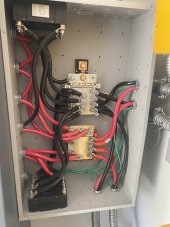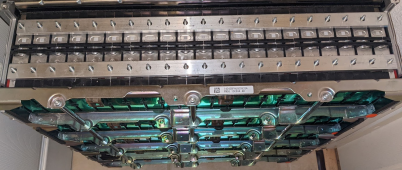cdherman
New Member
Hello from Kansas City. I used to frequent Arizona Wind and Sun forum and gained (and contributed a bit) knowledge there through the years. Designed a system for my pole barn in 2008-09 but let an installer actually do the install, as here in KC there was serious money at stake from then KCP&L (now evergy) and I did not want to lose that. That system with Kyocera panels (manufactured in Mexico) and a Fronius inverter has been "Up" for 14 years. Aside from reseting the internet bridge, zero issues.
AZ wind and sun forum seems to be in decline.....
I am getting back into this again, this time around for my brother. System will be grid tie, but I am trying to leave some options open for batteries etc.
First things first. I need to get service to the shed and its a big one, 50x120. Future proof in order. Anticipate eventual EV Semi truck charging. So 200A at least. This is in a place in western KS where local electricians are rare and DIY is common, so spare me any comments about how I need a professional. If there were one, I'd be happy to hire them.....
Back to the title and what I really would like to know: I am a believer that a copper bus is better than Al. Better heat tolerance (higher melting point, in a SHTF event) and harder. Yes, since Al is actually PER WEIGHT UNIT more conductive than copper, you can design a robust Al bus, but the breakers that will back feed solar power, or feed a high amperage EVSE are the same size. Those contacts in the panel, made of copper, are just superior in my thinking... And solar as well as EV charging involves sustained high amperage loads that are prone to heat. Copper = better IMHO
I've been looking for some support of this opinion. Makes me feel better spending more $$ for a copper busbar.
Your thoughts?
AZ wind and sun forum seems to be in decline.....
I am getting back into this again, this time around for my brother. System will be grid tie, but I am trying to leave some options open for batteries etc.
First things first. I need to get service to the shed and its a big one, 50x120. Future proof in order. Anticipate eventual EV Semi truck charging. So 200A at least. This is in a place in western KS where local electricians are rare and DIY is common, so spare me any comments about how I need a professional. If there were one, I'd be happy to hire them.....
Back to the title and what I really would like to know: I am a believer that a copper bus is better than Al. Better heat tolerance (higher melting point, in a SHTF event) and harder. Yes, since Al is actually PER WEIGHT UNIT more conductive than copper, you can design a robust Al bus, but the breakers that will back feed solar power, or feed a high amperage EVSE are the same size. Those contacts in the panel, made of copper, are just superior in my thinking... And solar as well as EV charging involves sustained high amperage loads that are prone to heat. Copper = better IMHO
I've been looking for some support of this opinion. Makes me feel better spending more $$ for a copper busbar.
Your thoughts?





